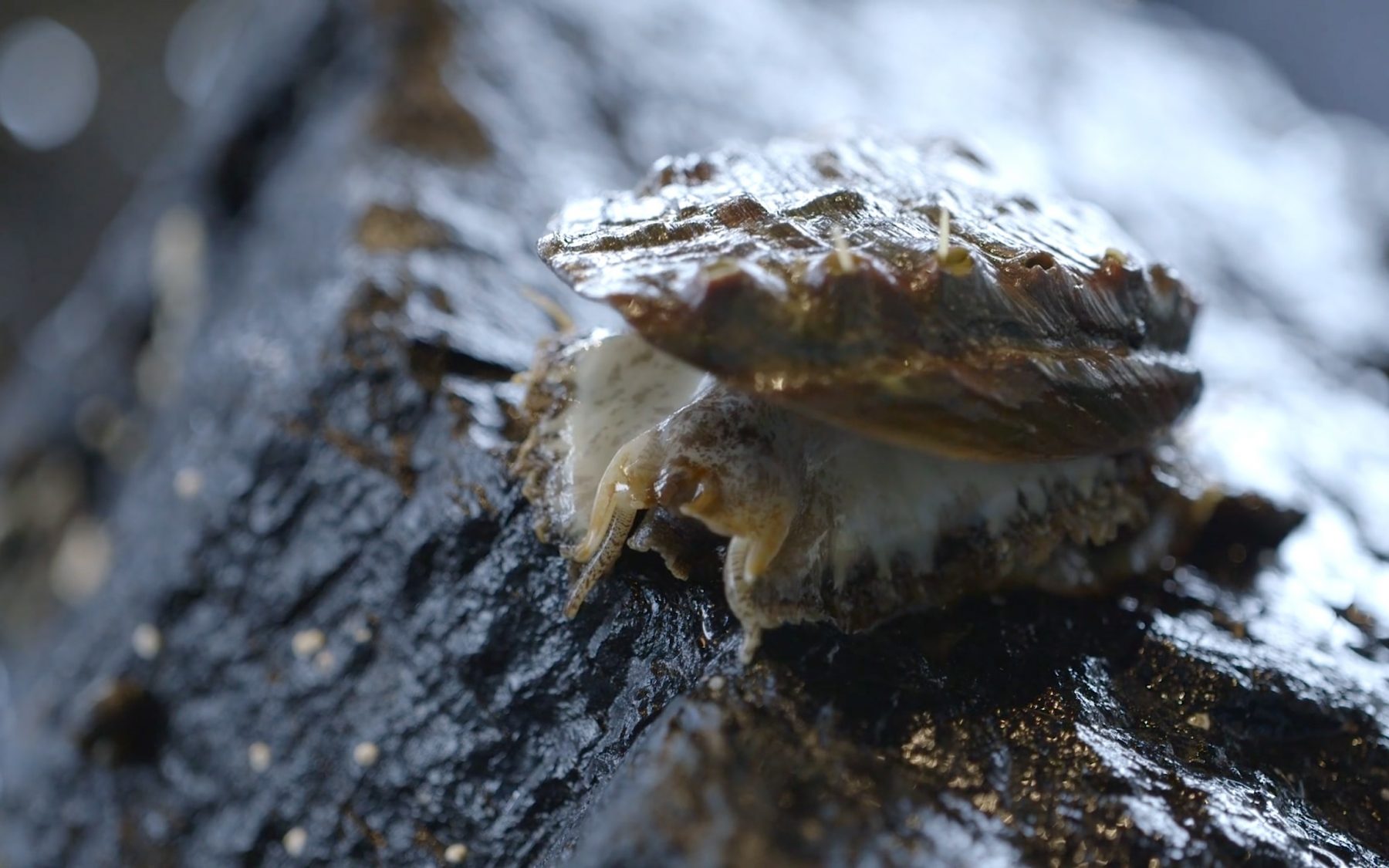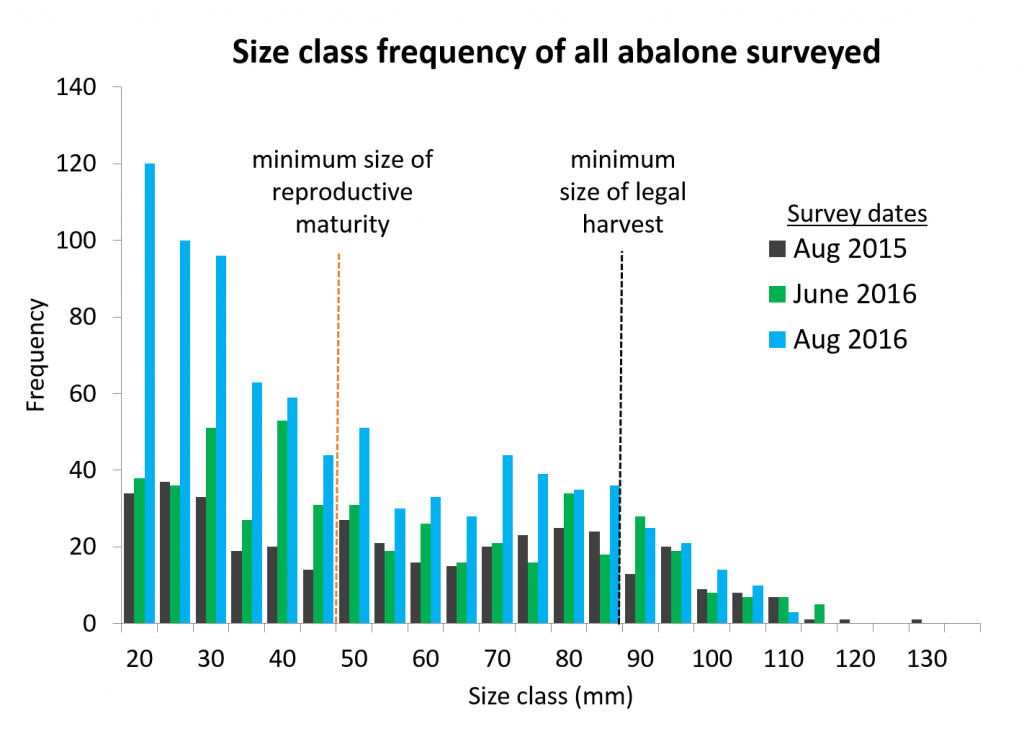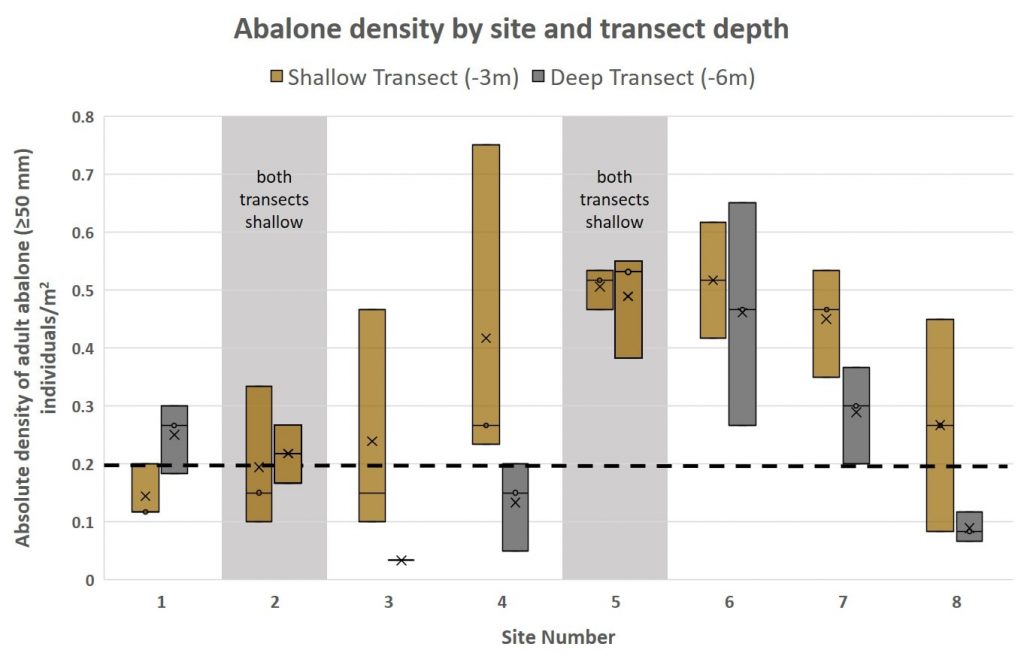
Size class distribution over three sampling periods indicates that > 85 % of pinto abalone surveyed across all sites were smaller than the minimum size of legal personal use or subsistence harvest (89 mm).
An apparent increase in the frequency of smaller-sized abalone over time may have been influenced by increasing observer survey experience, suggesting a larger size threshold for consistent detectability than the 20 mm lower threshold used by surveyors. Size class distribution was significantly different between Aug 2015 and Aug 2016 for abalone at or larger than reproductive size (≥ 50 mm), though not significant for abalone larger than the legal limit (89 mm). This may reflect size-associated differences in immigration or predation pressure.

Within-aggregation densities of adult pinto abalone (≥ 50 mm) varied significantly by transect, site, and sampling date. The minimum absolute density threshold for successful fertilization during a spawning event is currently thought to be around 0.2 adult individuals per square meter. Many of the abalone aggregations we sampled exceeded this threshold at least once over the course of our study. It is important to note that these are specifically within-aggregation densities, and should not be interpreted as representative of pinto abalone densities throughout Sitka Sound or Southeast Alaska.
While our divers did not specifically search for abalone smaller than 20 mm, they did opportunistically count many abalone of this size. Comparing our data to prior age-at-length surveys for pinto abalone in Southeast Alaska, it is likely that the majority of abalone less than 23 mm are also young of the year. Therefore, we believe we are seeing evidence of new recruitment of pinto abalone at all surveyed aggregations in Sitka Sound.

